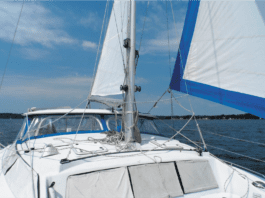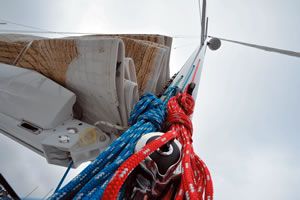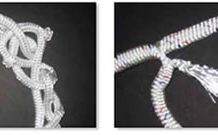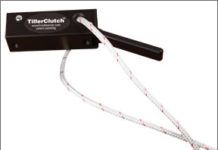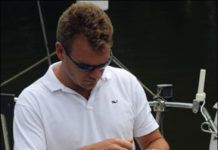Rope Test Yields Rope Hernias
Researching an upcoming article on the effects of various cleaning chemicals on ropes, our testers scrubbed and machine-washed mountains of nylon and polyester rope of every description. Samples ranged from three-strand dock line encrusted in marine life to brand-new polyester double-braid line. Our testing for that article continues, but we want to report one immediate finding relevant to any sailor who is wondering how to deal with old or dirty lines. Fully 70 percent of our test samples, including new and used line from New England Ropes (NER) and Samson Ropes, experienced failure of pre-spliced eyes; the buried portion of the core worked its way out of the main line and into the eye, where it carried zero load. In some cases, these failures were scarcely visible, while in others, the tail was exposed.
Sailboat Design Conference Part I
Beyond the text and photos contained in a sailboat manufacturing company’s brochures, and the words of a dealer or salesperson, and absent an understanding of yacht design, discerning the actual capabilities of today’s production boats is a major task. Gone are the days of Herreschoff et. al., when the conventional wisdom held that a long, deep keel was the best method of producing good tracking, displacement produced a seakindly ride, and performance (straightforward speed) was a simple matter of adding sail area. Prior to the age of fiberglass, most yachts used similar raw materials (wood and metal), and construction methods, so those variables were not generally a consideration.
Sailboat Design Conference Part II
Take a cursory glance at a new 35-footer and you might easily conclude that, except for cosmetic changes, the boat is essentially unchanged from those that made their debut in 1995. But that is not the case. In contemporary designs, modifications to deck layouts, the design of creature comforts, and boathandling systems, all reflect the market's desire for easy use, as evinced by below-deck sheeting systems (X Yachts), electrically controlled stern platforms (C&C), and removable traveler systems (Etap), for instance.
In-Boom Furling: Five Systems
There's no perfect solution to boom furling. It's not an easy bit of engineering. Still, all the systems on the market continue to mature. Schaefer's new offering looks like a good bet for medium-sized boats.
Mainsail Track Hardware
The systems used to attach a mainsail to its mast have come a long way since the time of hoops and parrels, and the variety of options now available for retrofitting plays to the advantage of the consumer.
Do You Want a Headsail Luff-groove Device?
Unless the boat was equipped with two headstays, which adds considerable windage, the headsail change drill meant releasing the lowest hanks on the headsail in use, tacking down the new sail, hanking it on below the head-sail already up, taking a deep breath, letting the jib halyard run, then going like mad to get the hanks open on the old jib, all the time listening to the skipper scream to hurry up.
Mast Support for Trailerable Boats
On most trailerable boats, when the mast is stowed for travel it is lashed to the bow pulpit and stern rail with no support at all in the middle.
The Rig: Keep it Standing
When was the last time you went carefully over every detail of your boat’s rig? The chances are good that it may have been a few years, and it’s possible that you may never have looked at it in the detail it deserves.
Tiller Taming with Two Fingers
During the past decade, Practical Sailor has looked at a number of devices designed to hold the tiller while the helmsman can attend to other important business-such as trimming a jib sheet or popping open a frosty cold beverage. Theres the Davis Tiller-Tamer (Oct. 1, 1992), the Tillerstay (April 15, 1997), the Tillermate (April 1, 2005), and the Steer-iT (April 1, 2008). Except for the Steer-iT, all of these systems involve some form of line-clutch device on the tiller. The clutch "grabs" an athwartship line that passes through it. The line then leads back to cam (or clam) cleats on either side of the tiller that can be used to tension or release the line.
Testers Examine Running Rigging Options
Today's sailboat owner faces myriad options when shopping for running rigging. When faced with so many choices-from lines made with the old standby materials like polyester to the newer high-tech ropes made from materials like Vectran and Spectra-it's hard to know which one would make the best mainsail halyard, best afterguy, or best genoa sheets. To find out, Practical Sailor tested 26 different varieties of braided rope from four manufacturers: Yale Cordage, Samson Rope, Novatech Braids, and New England Ropes. With so many lines to consider, we grouped the products by material and construction, sorting them into three fairly distinct performance groups (low, mid, and high tech) based upon their fiber content. The ropes were evaluated on their elongation, abrasion resistance, and handling characteristics. Ultimately, when all the stretching, abrading, and coiling was done, testers were able to find some clear choices based on price range and offer some general guidance for those who are shopping for new cordage.


































